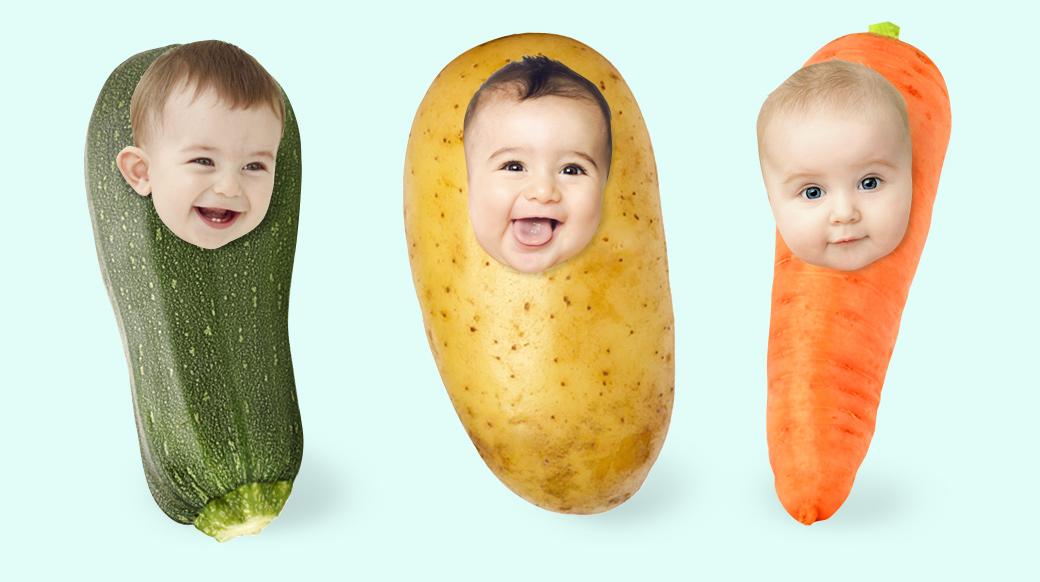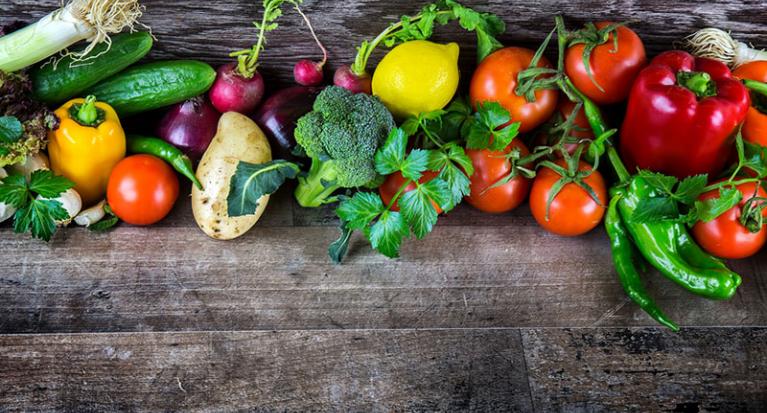Persistence pays off
Small children don't have to hate veggies.

© Andreas Kohli
Generally speaking, infants are not big vegetable fans and do not eat the advised amounts – as many parents in the developed world know. Based on recent findings, Dr Andrea Maier describes the reasons for these apparently innate aversions, and if or how they may be changed.
Offering infants a wide range of vegetables may increase the acceptance of new foods.
Studies show that the food preferences of two- or three-year-olds are a good indication of what kinds of food they will prefer for the rest of their childhood: eight-year-olds tend to like exactly the same foods they liked when they were two or three years old. What factors determine the food choices of two- or three-year-olds?
Prenatal experiences
Two factors influence food preferences: first, genetic predispositions to like one taste and dislike another; second, a sensitivity – inherited from their parents – for certain tastes and aromas. Predisposed reactions are not, however, rigidly predetermined and may be altered by a child’s experiences. The senses of taste and smell develop early on. Evidence shows that the human foetus has taste buds from the 15th week of pregnancy on; and as of the 25th week, mature olfactory nerve cells, too. Observations of premature babies (who were born in the 29th week of pregnancy and tested) show that they react positively to some aromas (e.g., vanilla) and negatively to others (e.g., butyric acid). On the other hand, immediately after birth, babies react positively to tastes to which they could only have been exposed prenatally: they lick their lips when they are offered a sweet solution, pucker them when they taste sour solutions, and spit out bitter-tasting samples. Prenatal exposure to aromas may also influence food choice in early childhood: as solid foods are introduced, infants whose mothers consumed carrot juice during the final weeks of pregnancy react more enthusiastically to cereals that taste like carrots than to those that do not. These initial results are fascinating, but it is not yet clear whether prenatal experiences can actually influence food preferences in later childhood.
First experiences after birth
Aromas to which babies are exposed while they are still on a milk diet seem to have a long-lasting effect on their food preferences. This is indicated by a study on a milk substitute containing hydrolysed proteins (hypo-allergenic nutrition). This milk substitute for infants with a severe milk protein allergy has an unmistakably sour and bitter “burnt” taste. Infants who were fed this milk substitute for the first time at the age of two or three months, accepted it even at the age of seven months. However, if infants were offered this milk for the first time when they were six or seven months old, they rejected it entirely. Moreover, infants who were fed hydrolysed baby milk for several months at a very early age were more willing to accept sourtasting beverages when they were four or five years old. Early exposure to “sour” or “bitter” substances seems to affect preferences for several years and, indeed, even into adulthood.
The impact of an infant’s experiences during the introduction of solid foods
Experiences with foods and tastes during the introduction of solid foods may influence later preferences. If one and the same vegetable is offered for several days, it may lead to a substantial increase in this vegetable’s consumption. Such findings suggest that mere exposure to a new food increases its acceptance, although it seems that these preferences are not necessarily transferable to other (similar tasting) foods. Feeding sweetened or unsweetened baby food to an infant during the first three months of solid foods has no impact on their acceptance of sweet fruits: evidently infants learn how “a specific food tastes” and not “to like all sweet foods”.
It makes sense to offer an infant a vegetable at least eight times in a row.
A few years ago it was shown that if an infant was exposed to a variety of vegetable purées when solid foods were being introduced, its acceptance of new foods increased – at least for the next two or three days. In one study, for example, the effect of three levels of vegetable variation (none at all, slight, great) was investigated while introducing solid foods to young children who were being breast fed or receiving a milk substitute. The study was conducted in two European regions (Dijon/France and Aalen/Germany). Breastfeeding and a varied diet at an early stage of introducing solid foods increased the acceptance of all new kinds of vegetables, as well as meat and fish for at least two months.
Can children learn to like vegetables?
Another study investigated whether infants could learn through repeated exposure to accept foods they had initially disliked. Mothers were asked to specify which vegetable purée their infants especially liked during the first months of taking solid foods, or rejected so adamantly that the mothers no longer offered these foods to them. The mothers were then asked to offer their babies one vegetable daily – alternating between a vegetable the babies had initially rejected and one they had preferred – for sixteen consecutive days. They recorded their babies’ daily intake and evaluated how much their children liked each vegetable. Nine months later, they filled out daily questionnaires on these same test vegetables.
The average intake and popularity of the vegetables eaten on each of the sixteen days was as follows: The rejected vegetable was presented to the infants on a total of eight days. Over this period, its intake increased linearly, averaging 17 g more per day, whereas the intake of the preferred vegetable rose by only 2.8 g per day. The first seven times the children were offered the vegetable initially rejected, they ate significantly less of it than the one they preferred. By the eighth time, the babies' intake of the two vegetables was almost identical. Their acceptance ratings displayed a similar pattern.
After nine months, 83% of the infants liked carrots (their favourite vegetable from the start), while 17% “ate it but didn’t particularly like it”. 15% of the babies were never offered the initially rejected vegetable again; 63% ate it and liked it according to their mothers; 12% ate it but didn’t care for it much; and only 10% didn’t like it or rejected it. This meant that, for the most part, the infants not only accepted the vegetable they had initially rejected after repeated exposure to it, but for the majority of them, their newly developed acceptance remained unchanged until they were almost two years old.
Conclusions
Many surveys have confirmed that infants reject vegetables and do not become fans later in childhood, either. The findings of the studies presented here suggest several solutions to this problem. First, offering infants a wide range of vegetables when introducing solid foods may increase the acceptance of new foods for at least two months. This effect is more pronounced among breastfed children. Second, it makes sense to offer an infant a vegetable that it has rejected at least eight times in a row, as 70% of the children will not only eat it but actually like it for several months afterwards, perhaps even until the end of childhood.
DOSSIER Knowledge |
| Persistence pays off | |
| The art of chewing | |
| Milk wars | |
| DETOX. Nutrition — What do you believe? | |
| All dossiers | |


